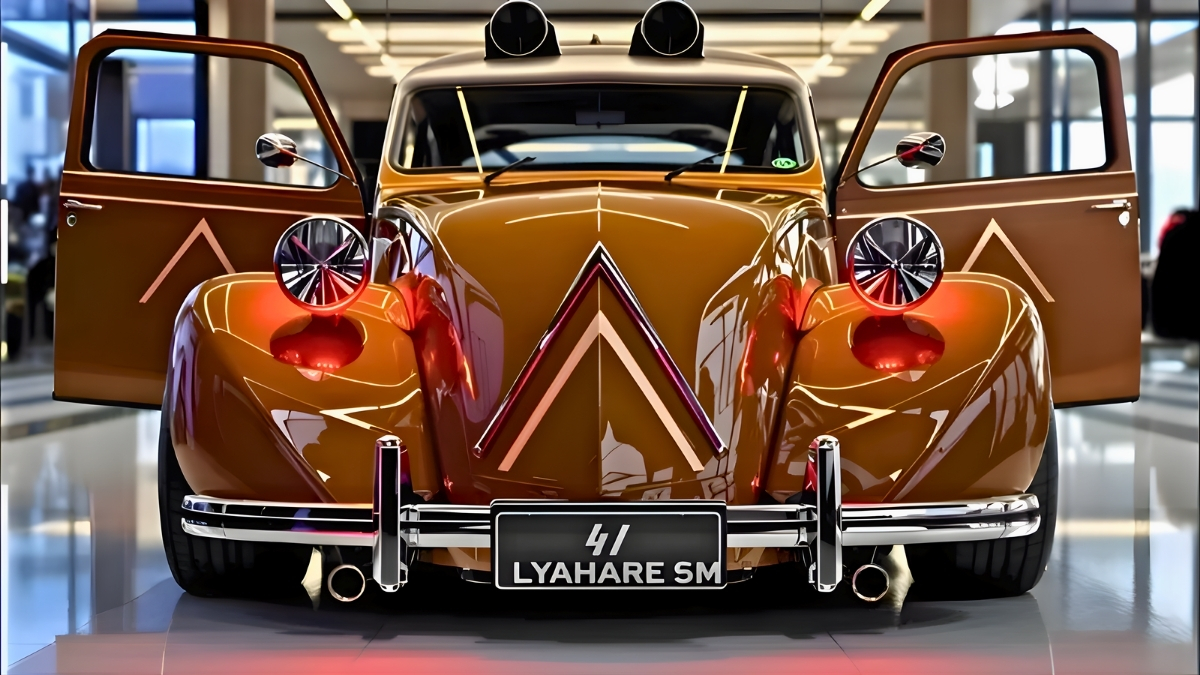The Citroën 2CV Sahara might look like a modest, funny-looking car, but don’t be fooled it’s one of the most unique off-road vehicles ever made.
Launched in the late 1950s, this version of the beloved French 2CV was designed specifically for rugged, remote terrain. What made it revolutionary? It had two engines one in the front, one in the back giving it true 4WD capability decades before it became mainstream.
It wasn’t built for looks. It was built to survive deserts, rocky trails, and river crossings. And it did with style.
When the 2CV Sahara Was Born and Where It Made History
The 2CV Sahara was introduced in 1958, targeting French colonies, oil exploration teams, and remote military outposts in Africa and the Middle East.
Only about 700 units were ever built, making it a rare gem today.
Its rugged simplicity and dual-engine layout made it ideal for places where roads didn’t exist think Algeria, Morocco, and rural France. It didn’t rely on complexity to go far. It relied on clever engineering.
How the 2CV Sahara’s Dual-Engine System Worked – Explained Simply
Here’s where it gets really cool.
The Sahara had two 425cc engines one in the front, one in the rear. Each engine powered one axle independently. So, no transfer case, no complicated AWD systems. Just two keys, two gear levers, and two ignition switches.
You could run one engine at a time (for efficiency on-road) or fire up both for 4×4 capability when things got rough.
| Feature | Details |
|---|---|
| Engine Setup | Twin 425cc flat-twin engines |
| Horsepower (total) | Around 24 hp |
| Top Speed | Approx. 65 km/h (40 mph) |
| Drive Configuration | Selectable front, rear, or 4WD |
| Fuel Tanks | Dual tanks under front seats |
It was low-tech genius, designed to be fixed with hand tools, even in the middle of nowhere.
Why the 2CV Sahara Became an Off-Road Legend
While it was never mass-produced like the Land Rover or Jeep, the 2CV Sahara earned legendary status because of its sheer durability and clever design.
Its lightweight chassis, high ground clearance, and independent suspension allowed it to crawl over rocks, sand, and rough trails all while sipping fuel.
Plus, the 2CV’s suspension design let it keep all four wheels on the ground, even when flexed to extremes. People used these cars for cross-desert expeditions, mountain treks, and even war-zone patrols.
No wonder it’s still a cult favorite among classic off-road enthusiasts.
Best Tips for Finding, Owning, or Restoring a Citroën 2CV Sahara Today
Thinking about owning one? You’re not alone collectors are constantly hunting for these.
Here’s what you should know:
- Check for authenticity: Many 2CV Saharas have been faked. Original VINs and frame numbers are key.
- Expect a price tag: A real, well-preserved Sahara can cost over $100,000 at auctions.
- Parts are rare: While standard 2CV parts are easy to find, Sahara-specific components (like the rear engine mounts) can be hard to source.
- Drive with care: These weren’t built for speed or luxury. They’re about rugged charm and history.
Pro tip: Join 2CV forums or clubs to connect with other owners they’re goldmines for knowledge and sourcing parts.
Understanding the Legacy of the 2CV Sahara in Today’s Off-Road Culture
The 2CV Sahara didn’t just exist it inspired.
Its minimalist 4WD design paved the way for simpler, more accessible off-roaders. And while most modern SUVs rely on electronics, the Sahara proved you could conquer the wilderness with just two engines, clever engineering, and a whole lot of grit.
In today’s world of overbuilt rigs and complicated tech, the Sahara is a reminder: you don’t need more you just need smart.
Conclusion: The 2CV Sahara Is Quirky, Brilliant, and Built for the Brave
The Citroën 2CV Sahara is one of the coolest, weirdest, and most capable cars you’ve probably never driven.
It wasn’t about horsepower or status. It was about reaching places others couldn’t and doing it with charm, simplicity, and French ingenuity.
Whether you’re a classic car buff, off-road fanatic, or just a fan of the unexpected, the Sahara is a machine worth celebrating.
FAQs
When was the Citroën 2CV Sahara produced?
Between 1958 and 1971, with fewer than 700 units built in total.
What makes the 2CV Sahara different from a regular 2CV?
It features two engines front and rear for selectable 4WD capability, along with dual fuel tanks and reinforced suspension.
Why is the 2CV Sahara so rare?
Because of its limited production and specialized purpose. Many were used in harsh environments and didn’t survive long-term.
Can you still buy a 2CV Sahara today?
Yes, but they’re very rare. Expect to pay $80,000 to $120,000+ for a verified, working model in good condition.
Is the 2CV Sahara good for modern off-roading?
It’s capable on rough terrain, but it’s more of a collector’s piece today than a practical off-roader for daily use.



